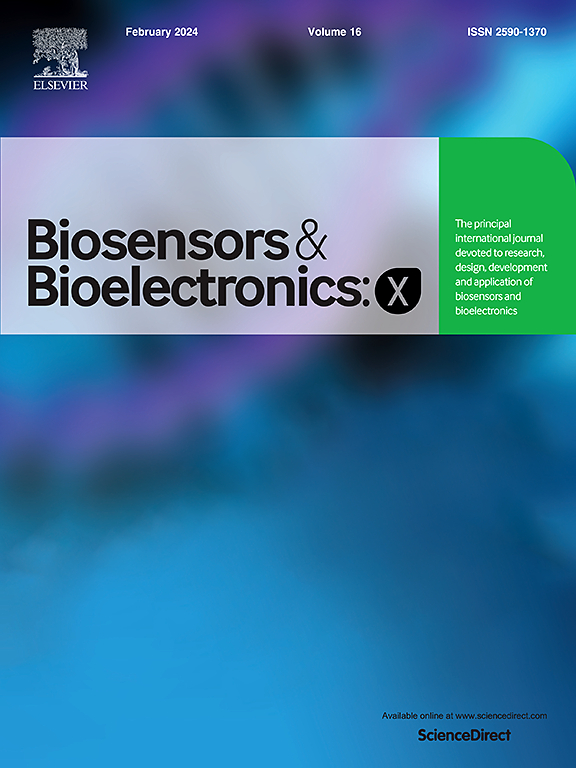生物污垢和异物反应对连续血糖监测仪影响的计算模型
IF 10.61
Q3 Biochemistry, Genetics and Molecular Biology
引用次数: 0
摘要
生物污垢和最终的异物反应是限制植入式连续血糖监测仪(cgm)长期性能的关键问题。植入物受到炎症反应控制的原位血流量减少,导致葡萄糖接触减少和传感器灵敏度降低(漂移)。在这项工作中,研究了第二代安培型酶促葡萄糖传感器的计算模型,该模型包含了由于异物反应(FBR)引起的间质环境的时间依赖性变化。适当的物理应用于葡萄糖从组织运输,时间异物反应,酶动力学和测量的电化学电流。所得到的传感器性能是根据14天的公开临床数据进行建模的,使用了不受FBR影响的理想植入物、有新生血管形成的纤维包埋和没有新生血管形成的纤维包埋的测试案例。所得的灵敏度、滞后时间和传感器性能与参考临床数据进行比较。结果表明,硅模型在预测体内性能方面具有实用价值,为传感器设计和临床前优化提供了重要工具。本文章由计算机程序翻译,如有差异,请以英文原文为准。
Computational modeling of the effects of biofouling and foreign body response on continuous glucose monitors
Biofouling and eventual foreign body response are critical issues limiting the long-term performance of implantable continuous glucose monitors (CGMs). The implant is subjected to reduced blood flow in situ governed by the inflammatory response, resulting in decreased access to glucose and a decrease in sensor sensitivity (drift). In this work, a computational model of an amperometric 2nd generation enzymatic glucose sensor is examined that incorporates the time-dependent changes in the interstitial environment due to the foreign body response (FBR). Appropriate physics are applied with respect to glucose transport from tissue, temporal foreign body response, enzyme kinetics, and measured electrochemical current. The resultant sensor performance is modeled against publicly available clinical data over a 14-day wear time, using test cases of an idealized implant that is not subjected to FBR, fibrous encapsulation with neovascularization, and fibrous encapsulation without neovascularization. The resultant sensitivity, lag-time, and sensor performance are compared against the reference clinical data. Results demonstrate that in silico modeling has utility in predicting in vivo performance, offering a vital tool for sensor design and pre-clinical optimization.
求助全文
通过发布文献求助,成功后即可免费获取论文全文。
去求助
来源期刊

Biosensors and Bioelectronics: X
Biochemistry, Genetics and Molecular Biology-Biophysics
CiteScore
4.60
自引率
0.00%
发文量
166
审稿时长
54 days
期刊介绍:
Biosensors and Bioelectronics: X, an open-access companion journal of Biosensors and Bioelectronics, boasts a 2020 Impact Factor of 10.61 (Journal Citation Reports, Clarivate Analytics 2021). Offering authors the opportunity to share their innovative work freely and globally, Biosensors and Bioelectronics: X aims to be a timely and permanent source of information. The journal publishes original research papers, review articles, communications, editorial highlights, perspectives, opinions, and commentaries at the intersection of technological advancements and high-impact applications. Manuscripts submitted to Biosensors and Bioelectronics: X are assessed based on originality and innovation in technology development or applications, aligning with the journal's goal to cater to a broad audience interested in this dynamic field.
 求助内容:
求助内容: 应助结果提醒方式:
应助结果提醒方式:


